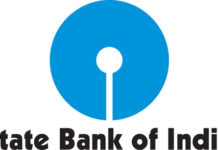जानिए, क्या होती है मुद्रास्फीति या महंगाई दर ?
यह ऐसी आर्थिक शब्दावली है जिससे हर कोई परिचित है। गरीब-अमीर, कर्मचारी-पेंशनर, मजदूर-उद्यमी और केंद्रीय बैंक-सरकार, हर कोई इससे प्रभावित होता है। इसका असर किसी पर कम, किसी पर ज्यादा, लेकिन जो आर्थिक रूप से कमजोर होता है, उस पर सबसे ज्यादा पड़ता है। राजनीतिक दल महंगाई काबू रखने के वादे पर चुनाव लड़ते हैं, सत्ता में आते हैं। वे ऐसा करने में विफल रहते हैं तो सत्ता से चले जाते हैं।
मुद्रास्फीति क्या है? इसका मतलब क्या है? हर माह थोक और खुदरा महंगाई दर के जो आंकड़े आते हैं, उनका क्या अर्थ है? आम लोगों के जीवन से उनका क्या संबंध है?
मुद्रास्फीति या महंगाई दर :-
एक निश्चित अवधि में चुनिंदा वस्तुओं या सेवाओं के मूल्य में जो वृद्धि या गिरावट आती है, उसे मुद्रास्फीति कहते हैं। इसे जब प्रतिशत में व्यक्त करते हैं तो यह महंगाई दर कहलाती है। सरल शब्दों में कहें तो यह कीमतों में उतार-चढ़ाव की रफ्तार को दर्शाती है। यही वजह है कि कई बार थोक या खुदरा महंगाई की दर धीमी होने पर भी बाजार में कीमतों में गिरावट नहीं आती।
देश में सरकार मुख्यत :-
‘थोक मूल्य सूचकांक’ और ‘खुदरा मूल्य सूचकांक’ के रूप में हर माह मुद्रास्फीति के आंकड़े जारी करती है, जिससे पता चलता है कि उक्त महीने में महंगाई बढ़ी या घटी। थोक मूल्य सूचकांक (डब्ल्यूपीआइ) का आकलन चुनिंदा 697 वस्तुओं की थोक कीमतों में उतार-चढ़ाव के आधार पर किया जाता है। ध्यान देने वाली बात यह है कि इसमें सेवाएं शामिल नहीं हैं। थोक मूल्य सूचकांक में शामिल वस्तुओं को तीन वर्गों- प्राथमिक उत्पाद, ईंधन-बिजली और विनिर्मित उत्पादों की श्रेणी में रखा जाता है।
इसमें शामिल कृषि उत्पादों के भाव पर नजर रखने के लिए निर्धारित मंडियों से थोक भाव लिया जाता है, जबकि विनिर्मित उत्पादों के लिए एक्स-फैक्ट्री प्राइस (फैक्ट्री मूल्य) और खनिजों के लिए एक्स-माइन प्राइस (खदान पर खनिज के मूल्य) को संज्ञान में लिया जाता है। थोक मूल्य सूचकांक के बास्केट में जो वस्तुएं शामिल हैं, उन्हें उनके ‘उत्पादन मूल्य’ के आधार पर वेटेज दिया जाता है। इसके बाद थोक मूल्य सूचकांक को आधार वर्ष पर व्यक्त किया जाता है। जैसे हमारे देश में थोक मूल्य सूचकांक का आधार 2011-12 है। मसलन, 2011-12 में थोक मूल्य सूचकांक 100 था और अब 110 है तो महंगाई दर 10 फीसद होगी।
प्रत्येक माह के आंकड़े को उसके अगले महीने की 14 तारीख को जारी किया जाता है। उदाहरण के लिए सरकार ने फरवरी, 2018 के थोक महंगाई के आंकड़े 14 मार्च को जारी किए। यहां यह ध्यान रखना जरूरी है कि फरवरी, 2018 के थोक मूल्य सूचकांक की तुलना फरवरी, 2017 से की गई थी। थोक महंगाई दर अर्थव्यवस्था में आपूर्ति पक्ष की स्थिति दर्शाती है। इसमें गिरावट या वृद्धि के आधार पर सरकार आपूर्ति सुधारने खासकर खाद्य वस्तुओं की आपूर्ति सुचारु बनाने के लिए कदम उठाती है।
खुदरा महंगाई :-
खुदरा महंगाई दर का आकलन उपभोक्ता मूल्य सूचकांक (सीपीआइ) के आधार पर किया जाता है। ग्रामीण व शहरी क्षेत्रों के लिए इसका आकलन अलग-अलग होता है। परिवार जिन वस्तुओं और सेवाओं का उपभोग करते हैं, उन्हें सीपीआइ बास्केट में शामिल किया जाता है। इसमें ग्रामीण क्षेत्र के लिए 448 और शहरी क्षेत्रों के लिए 460 वस्तुएं व सेवाएं शामिल हैं। इसमें खाद्य वस्तुओं व शिक्षा, स्वास्थ्य और मकान के किराए जैसी सेवाओं पर खर्च भी शामिल है। सांख्यिकी एवं कार्यक्रम क्रियान्वयन मंत्रालय हर महीने की 12 तारीख को पिछले महीने के लिए खुदरा महंगाई के आंकड़े जारी करता है। इसका इस्तेमाल रिजर्व बैंक मौद्रिक नीति तय करने के लिए करता है।
खुदरा महंगाई दर में उतार-चढ़ाव के आधार पर सरकारी कर्मचारियों का महंगाई भत्ता तय होता है। आरबीआइ रेपो दर घोषित करता है, जिससे ब्याज दरें तय होती हैं। खुदरा महंगाई बढ़ने से सबसे ज्यादा परेशानी उन लोगों को होती है, जिनकी मासिक आय फिक्स्ड है। मसलन, पेंशनर व वरिष्ठ नागरिक, जो बैंक में जमा राशि से मिलने वाले ब्याज से गुजारा करते हैं। महंगाई बढ़ने से ऐसे लोगों की क्रय शक्ति कम हो जाती है। दूसरे शब्दों में कहें तो इससे उनकी वास्तविक आय कम हो जाती है।
Know what happens, inflation ?
It is such an economic term that everyone is familiar with. Poor-rich, employee-pensioners, labor-entrepreneurs and central bank-government, everyone is affected by this. Its effect is less on one, more on somebody, but which is financially vulnerable, it is most costly. Political parties fight elections on the promise of controlling inflation, come to power. If they fail to do so, they go away from power.
What is Inflation? what does it mean? What are the figures that come in wholesale and retail inflation rates every month? What is their relationship with the lives of ordinary people?
Inflation or inflation :-
In a certain period, the increase or fall in the value of selected goods or services is called inflation. When it expresses it in percent it is called inflation rate. Simply put, this reflects the speed of volatility in prices. This is the reason that many times the rate of wholesale or retail inflation is slow but the market does not fall in prices.
The country’s main :-
Monthly inflation figures every month as ‘Wholesale Price Index’ and ‘Retail Price Index’, which shows that inflation has increased or decreased in the said month. The wholesale price index (WPI) is assessed on the basis of volatility in the wholesale prices of select 697 items. The point of attention is that the services are not included in it. The items included in the wholesale price index are kept in the category of three categories – primary product, fuel-power and manufactured products.
To keep an eye on the prices of the agro products included, the wholesale prices are taken from the scheduled mandis, while X-factory price (factory value) for manufactured products and X-mine price for mineral (the value of minerals on the mine) Is taken in Items in the basket of wholesale price index are given weightage based on their ‘production value’ basis. After this, the wholesale price index is expressed on the base year. As in our country the basis of wholesale price index is 2011-12. For instance, the wholesale price index was 100 per cent in 2011-12 and now it is 110 per cent and inflation will be 10 per cent.
The data of each month is issued on the 14th of next month. For example, the government released wholesale inflation data for February, 2018 on March 14. It is important to keep in mind that the wholesale price index for February, 2018 was compared to February, 2017. The wholesale inflation rate shows the position of the supply side in the economy. Depending on the decline or increase in it, the government takes steps to improve supply, especially to make the supply of food items smooth.
Retail inflation :-
The retail inflation rate is calculated based on the Consumer Price Index (CPI). It is different for rural and urban areas. The items and services that the family consumes are included in the CPI basket. This includes 448 rural areas and 460 items for urban areas. This includes spending on food items and services like education, health and housing rent. The Ministry of Statistics and Program Implementation releases retail inflation data for the last month on the 12th of every month. It uses the Reserve Bank to decide monetary policy.
On the basis of fluctuations in the retail inflation rate, dearness allowance of government employees is decided. RBI announces repo rates, thereby fixing interest rates. The increase in retail inflation is the biggest problem for those whose monthly income is fixed. For example, pensioners and senior citizens who live with interest from deposits in the bank. Increasing inflation increases the purchasing power of such people. In other words, it reduces their actual income.















